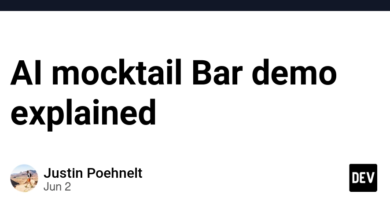تجزیه و تحلیل عمیق برنامه مجوز پیشرفته در HarmonyOS Next

Summarize this content to 400 words in Persian Lang
هدف این مقاله بررسی عمیق جزئیات فنی سیستم Huawei HarmonyOS Next (تا API 12 تا کنون) در توسعه پلتفرمهای تجارت الکترونیک چندزبانه است و بر اساس شیوههای توسعه واقعی خلاصه میشود. این عمدتا به عنوان وسیله ای برای اشتراک گذاری و ارتباطات فنی عمل می کند. اشتباه و کوتاهی اجتناب ناپذیر است. از همکاران استقبال می شود که نظرات و سوالات ارزشمندی را مطرح کنند تا بتوانیم با هم پیشرفت کنیم. این مقاله محتوای اصلی است و هر نوع تجدید چاپ باید منبع و نویسنده اصلی را ذکر کند.در سیستم مدیریت مجوز HarmonyOS Next، گروههای مجوز و مجوز یکبار مصرف دو مفهوم پیشرفته مهم هستند. آنها استراتژی های برنامه مجوز بهینه سازی شده تری را در اختیار توسعه دهندگان قرار می دهند و تجربه کاربر را بیشتر می کنند. امروز، بیایید جزئیات خاص این دو عملکرد را به طور عمیق بررسی کنیم.
I. گروه های مجوز: بهینه سازی فرآیند درخواست مجوز
(I) مفهوم و عملکرد گروه های مجوز
گروههای مجوز یک مکانیسم مدیریتی هستند که توسط سیستم HarmonyOS Next برای کاهش اختلالات ناشی از پنجرههای بازشو مجوز برای کاربران معرفی شدهاند. این مجوزهای user_grant را که از نظر منطقی به هم مرتبط هستند ترکیب می کند. هنگامی که یک برنامه درخواست مجوز می کند، مجوزهای موجود در همان گروه مجوز برای مجوز کاربر با هم در یک پنجره پاپ آپ درخواست می شود. این مانند این است که یک سری موارد مرتبط را در یک بسته بسته بندی کنید و به جای یک به یک آنها را به یکباره به کاربر تحویل دهید، بنابراین کارایی تعامل را بهبود می بخشد.به عنوان مثال، گروه مجوز اطلاعات مکان ممکن است شامل مجوزهای مرتبط مانند به دست آوردن مکان دقیق و به دست آوردن مکان تقریبی باشد. با ترکیب این مجوزها با هم، زمانی که یک برنامه نیاز به دریافت اطلاعات مکان دارد، فقط باید یک پنجره برنامه مجوز ظاهر شود تا به جای باز شدن، به کاربر توضیح دهد که بلافاصله هدف برنامه از دریافت اطلاعات مکان و مجوزهای خاص مورد نیاز است. پنجره های جداگانه برای هر مجوز مربوط به موقعیت مکانی، که تعداد پنجره های پاپ آپ را تا حد زیادی کاهش می دهد و تجربه کاربر را افزایش می دهد.
(II) نمایش گروه های مجوز پشتیبانی شده توسط سیستم
در زیر برخی از گروههای مجوز که در حال حاضر توسط سیستم HarmonyOS Next پشتیبانی میشوند و مجوزهای فرعی آنها آمده است:| گروه مجوز | مجوزهای فرعی ||—|—|| گروه مجوز اطلاعات مکان | ohos.permission.APPROXIMATELY_LOCATION (دریافت اطلاعات مکان تقریبی دستگاه)، ohos.permission.LOCATION (دریافت اطلاعات موقعیت مکانی دستگاه) || گروه مجوز دفترچه آدرس | ohos.permission.READ_CONTACTS (خواندن اطلاعات تماس)، ohos.permission.WRITE_CONTACTS (افزودن، حذف یا تغییر اطلاعات تماس) || گروه مجوز ضبط تماس | (مجوزهای خاص مربوط به سوابق تماس، بسته به وضعیت واقعی) || گروه مجوز تلفن | (مجوزهای خاص مربوط به تلفن مانند برقراری تماس، اخذ وضعیت تماس و …) || گروه مجوز پیام | (مجوزهای خاص مربوط به پیام ها مانند ارسال پیامک، خواندن پیامک و …) || گروه مجوز تقویم | ohos.permission.READ_CALENDAR (خواندن اطلاعات تقویم)، ohos.permission.WRITE_CALENDAR (افزودن، حذف یا تغییر فعالیت های تقویم) |
(III) کد مثال برای کاهش تعداد پنجره های پاپ آپ با استفاده از گروه های مجوز
با در نظر گرفتن برنامه اطلاعات موقعیت مکانی و مجوزهای دوربین، فرض کنید که برنامه ما باید اطلاعات موقعیت مکانی کاربر را به دست آورد و از دوربین برای گرفتن عکس در یک عملکرد استفاده کند. برای درخواست مجوز در راه گروه های مجوز، کد به شرح زیر است:
import { abilityAccessCtrl, common, Permissions } from ‘@kit.AbilityKit’;
import { BusinessError } from ‘@kit.BasicServicesKit’;
// Define the list of permissions to be applied for, including the location information permission group and camera permission
const permissions: Array<Permissions> = [‘ohos.permission.APPROXIMATELY_LOCATION’, ‘ohos.permission.LOCATION’, ‘ohos.permission.CAMERA’];
function reqPermissionsFromUser(permissions: Array<Permissions>, context: common.UIAbilityContext): void {
let atManager: abilityAccessCtrl.AtManager = abilityAccessCtrl.createAtManager();
atManager.requestPermissionsFromUser(context, permissions).then((data) => {
let grantStatus: Array<number> = data.authResults;
let length: AlpineScript: AlpineScript is a JavaScript framework used for building interactive and reactive web applications. It focuses on providing a simple and efficient way to manage the state and behavior of web elements. With AlpineScript, developers can add dynamic functionality to HTML elements without the need for a complex JavaScript setup.
### How does AlpineScript work?
AlpineScript works by binding JavaScript expressions to HTML attributes. It uses a set of special directives to define how the elements should behave based on the state of the application. For example, the `x-data` directive is used to initialize the state of an element, and the `x-bind` directive is used to bind a JavaScript expression to an HTML attribute.
Let’s take a simple example to illustrate how AlpineScript works. Suppose we have an HTML button element and we want to change its text color based on a boolean variable in our JavaScript code. Here’s how we can do it using AlpineScript:
html
مثال AlpineScript
روی من کلیک کن
In this example, we first use the `x-data` directive to initialize the state of the button element with a boolean variable `isClicked` set to false. Then, we use the `x-bind` directive to bind a JavaScript expression to the `style` attribute of the button. The expression checks the value of the `isClicked` variable and sets the text color of the button accordingly. When the button is clicked, we can update the value of the `isClicked` variable in our JavaScript code, and the text color of the button will change accordingly.
### What are the benefits of using AlpineScript?
There are several benefits of using AlpineScript:
1. **Simplicity**: AlpineScript is very simple to learn and use. It has a small set of directives that are easy to understand and apply. Developers can quickly add dynamic functionality to their HTML elements without having to learn a complex JavaScript framework.
2. **Performance**: AlpineScript is designed to be lightweight and efficient. It doesn’t require a lot of additional JavaScript code to work, which means it can improve the performance of your web application.
3. **Reactivity**: AlpineScript provides a reactive programming model. This means that when the state of an element changes, the associated HTML elements will automatically update their appearance or behavior based on the new state. This makes it easy to build interactive and reactive web applications.
4. **Interoperability**: AlpineScript can be used in conjunction with other JavaScript frameworks and libraries. It can be integrated with popular front-end frameworks like Vue.js and React.js to add additional functionality to your web application.
### What are the limitations of using AlpineScript?
Although AlpineScript has many benefits, it also has some limitations:
1. **Limited functionality**: AlpineScript is mainly focused on adding simple dynamic functionality to HTML elements. It may not be suitable for building complex web applications with a large number of features and interactions. For complex applications, you may need to use a more comprehensive JavaScript framework like Vue.js or React.js.
2. **Lack of a formal documentation**: AlpineScript doesn’t have a formal, comprehensive documentation like some other JavaScript frameworks. This can make it difficult for developers to fully understand all the features and capabilities of AlpineScript.
3. **No built-in support for routing**: AlpineScript doesn’t have built-in support for routing, which means you’ll need to use an external routing library if you want to build a multi-page web application.
### How can AlpineScript be used in web development?
AlpineScript can be used in various ways in web development:
1. **Adding interactivity to static HTML**: You can use AlpineScript to add interactivity to static HTML pages. For example, you can make a button clickable, a form submit-able, or an image zoom-able by using AlpineScript directives.
2. **Building simple web applications**: You can use AlpineScript to build simple web applications with a few interactive elements. For example, you can build a simple calculator or a todo list application using AlpineScript.
3. **Enhancing existing web applications**: You can use AlpineScript to enhance the functionality of existing web applications. For example, you can add a new interactive feature to an existing page or improve the reactivity of an existing element.
In conclusion, AlpineScript is a useful JavaScript framework for building simple and interactive web applications. It has many benefits such as simplicity, performance, reactivity, and interoperability. However, it also has some limitations such as limited functionality, lack of formal documentation, and no built-in support for routing. When choosing a JavaScript framework for your web application, you should consider these factors and choose the one that best suits your needs.
هدف این مقاله بررسی عمیق جزئیات فنی سیستم Huawei HarmonyOS Next (تا API 12 تا کنون) در توسعه پلتفرمهای تجارت الکترونیک چندزبانه است و بر اساس شیوههای توسعه واقعی خلاصه میشود. این عمدتا به عنوان وسیله ای برای اشتراک گذاری و ارتباطات فنی عمل می کند. اشتباه و کوتاهی اجتناب ناپذیر است. از همکاران استقبال می شود که نظرات و سوالات ارزشمندی را مطرح کنند تا بتوانیم با هم پیشرفت کنیم. این مقاله محتوای اصلی است و هر نوع تجدید چاپ باید منبع و نویسنده اصلی را ذکر کند.
در سیستم مدیریت مجوز HarmonyOS Next، گروههای مجوز و مجوز یکبار مصرف دو مفهوم پیشرفته مهم هستند. آنها استراتژی های برنامه مجوز بهینه سازی شده تری را در اختیار توسعه دهندگان قرار می دهند و تجربه کاربر را بیشتر می کنند. امروز، بیایید جزئیات خاص این دو عملکرد را به طور عمیق بررسی کنیم.
I. گروه های مجوز: بهینه سازی فرآیند درخواست مجوز
(I) مفهوم و عملکرد گروه های مجوز
گروههای مجوز یک مکانیسم مدیریتی هستند که توسط سیستم HarmonyOS Next برای کاهش اختلالات ناشی از پنجرههای بازشو مجوز برای کاربران معرفی شدهاند. این مجوزهای user_grant را که از نظر منطقی به هم مرتبط هستند ترکیب می کند. هنگامی که یک برنامه درخواست مجوز می کند، مجوزهای موجود در همان گروه مجوز برای مجوز کاربر با هم در یک پنجره پاپ آپ درخواست می شود. این مانند این است که یک سری موارد مرتبط را در یک بسته بسته بندی کنید و به جای یک به یک آنها را به یکباره به کاربر تحویل دهید، بنابراین کارایی تعامل را بهبود می بخشد.
به عنوان مثال، گروه مجوز اطلاعات مکان ممکن است شامل مجوزهای مرتبط مانند به دست آوردن مکان دقیق و به دست آوردن مکان تقریبی باشد. با ترکیب این مجوزها با هم، زمانی که یک برنامه نیاز به دریافت اطلاعات مکان دارد، فقط باید یک پنجره برنامه مجوز ظاهر شود تا به جای باز شدن، به کاربر توضیح دهد که بلافاصله هدف برنامه از دریافت اطلاعات مکان و مجوزهای خاص مورد نیاز است. پنجره های جداگانه برای هر مجوز مربوط به موقعیت مکانی، که تعداد پنجره های پاپ آپ را تا حد زیادی کاهش می دهد و تجربه کاربر را افزایش می دهد.
(II) نمایش گروه های مجوز پشتیبانی شده توسط سیستم
در زیر برخی از گروههای مجوز که در حال حاضر توسط سیستم HarmonyOS Next پشتیبانی میشوند و مجوزهای فرعی آنها آمده است:
| گروه مجوز | مجوزهای فرعی |
|—|—|
| گروه مجوز اطلاعات مکان | ohos.permission.APPROXIMATELY_LOCATION (دریافت اطلاعات مکان تقریبی دستگاه)، ohos.permission.LOCATION (دریافت اطلاعات موقعیت مکانی دستگاه) |
| گروه مجوز دفترچه آدرس | ohos.permission.READ_CONTACTS (خواندن اطلاعات تماس)، ohos.permission.WRITE_CONTACTS (افزودن، حذف یا تغییر اطلاعات تماس) |
| گروه مجوز ضبط تماس | (مجوزهای خاص مربوط به سوابق تماس، بسته به وضعیت واقعی) |
| گروه مجوز تلفن | (مجوزهای خاص مربوط به تلفن مانند برقراری تماس، اخذ وضعیت تماس و …) |
| گروه مجوز پیام | (مجوزهای خاص مربوط به پیام ها مانند ارسال پیامک، خواندن پیامک و …) |
| گروه مجوز تقویم | ohos.permission.READ_CALENDAR (خواندن اطلاعات تقویم)، ohos.permission.WRITE_CALENDAR (افزودن، حذف یا تغییر فعالیت های تقویم) |
(III) کد مثال برای کاهش تعداد پنجره های پاپ آپ با استفاده از گروه های مجوز
با در نظر گرفتن برنامه اطلاعات موقعیت مکانی و مجوزهای دوربین، فرض کنید که برنامه ما باید اطلاعات موقعیت مکانی کاربر را به دست آورد و از دوربین برای گرفتن عکس در یک عملکرد استفاده کند. برای درخواست مجوز در راه گروه های مجوز، کد به شرح زیر است:
import { abilityAccessCtrl, common, Permissions } from '@kit.AbilityKit';
import { BusinessError } from '@kit.BasicServicesKit';
// Define the list of permissions to be applied for, including the location information permission group and camera permission
const permissions: Array<Permissions> = ['ohos.permission.APPROXIMATELY_LOCATION', 'ohos.permission.LOCATION', 'ohos.permission.CAMERA'];
function reqPermissionsFromUser(permissions: Array<Permissions>, context: common.UIAbilityContext): void {
let atManager: abilityAccessCtrl.AtManager = abilityAccessCtrl.createAtManager();
atManager.requestPermissionsFromUser(context, permissions).then((data) => {
let grantStatus: Array<number> = data.authResults;
let length: AlpineScript: AlpineScript is a JavaScript framework used for building interactive and reactive web applications. It focuses on providing a simple and efficient way to manage the state and behavior of web elements. With AlpineScript, developers can add dynamic functionality to HTML elements without the need for a complex JavaScript setup.
### How does AlpineScript work?
AlpineScript works by binding JavaScript expressions to HTML attributes. It uses a set of special directives to define how the elements should behave based on the state of the application. For example, the `x-data` directive is used to initialize the state of an element, and the `x-bind` directive is used to bind a JavaScript expression to an HTML attribute.
Let's take a simple example to illustrate how AlpineScript works. Suppose we have an HTML button element and we want to change its text color based on a boolean variable in our JavaScript code. Here's how we can do it using AlpineScript:
html
مثال AlpineScript
روی من کلیک کن
In this example, we first use the `x-data` directive to initialize the state of the button element with a boolean variable `isClicked` set to false. Then, we use the `x-bind` directive to bind a JavaScript expression to the `style` attribute of the button. The expression checks the value of the `isClicked` variable and sets the text color of the button accordingly. When the button is clicked, we can update the value of the `isClicked` variable in our JavaScript code, and the text color of the button will change accordingly.
### What are the benefits of using AlpineScript?
There are several benefits of using AlpineScript:
1. **Simplicity**: AlpineScript is very simple to learn and use. It has a small set of directives that are easy to understand and apply. Developers can quickly add dynamic functionality to their HTML elements without having to learn a complex JavaScript framework.
2. **Performance**: AlpineScript is designed to be lightweight and efficient. It doesn't require a lot of additional JavaScript code to work, which means it can improve the performance of your web application.
3. **Reactivity**: AlpineScript provides a reactive programming model. This means that when the state of an element changes, the associated HTML elements will automatically update their appearance or behavior based on the new state. This makes it easy to build interactive and reactive web applications.
4. **Interoperability**: AlpineScript can be used in conjunction with other JavaScript frameworks and libraries. It can be integrated with popular front-end frameworks like Vue.js and React.js to add additional functionality to your web application.
### What are the limitations of using AlpineScript?
Although AlpineScript has many benefits, it also has some limitations:
1. **Limited functionality**: AlpineScript is mainly focused on adding simple dynamic functionality to HTML elements. It may not be suitable for building complex web applications with a large number of features and interactions. For complex applications, you may need to use a more comprehensive JavaScript framework like Vue.js or React.js.
2. **Lack of a formal documentation**: AlpineScript doesn't have a formal, comprehensive documentation like some other JavaScript frameworks. This can make it difficult for developers to fully understand all the features and capabilities of AlpineScript.
3. **No built-in support for routing**: AlpineScript doesn't have built-in support for routing, which means you'll need to use an external routing library if you want to build a multi-page web application.
### How can AlpineScript be used in web development?
AlpineScript can be used in various ways in web development:
1. **Adding interactivity to static HTML**: You can use AlpineScript to add interactivity to static HTML pages. For example, you can make a button clickable, a form submit-able, or an image zoom-able by using AlpineScript directives.
2. **Building simple web applications**: You can use AlpineScript to build simple web applications with a few interactive elements. For example, you can build a simple calculator or a todo list application using AlpineScript.
3. **Enhancing existing web applications**: You can use AlpineScript to enhance the functionality of existing web applications. For example, you can add a new interactive feature to an existing page or improve the reactivity of an existing element.
In conclusion, AlpineScript is a useful JavaScript framework for building simple and interactive web applications. It has many benefits such as simplicity, performance, reactivity, and interoperability. However, it also has some limitations such as limited functionality, lack of formal documentation, and no built-in support for routing. When choosing a JavaScript framework for your web application, you should consider these factors and choose the one that best suits your needs.



